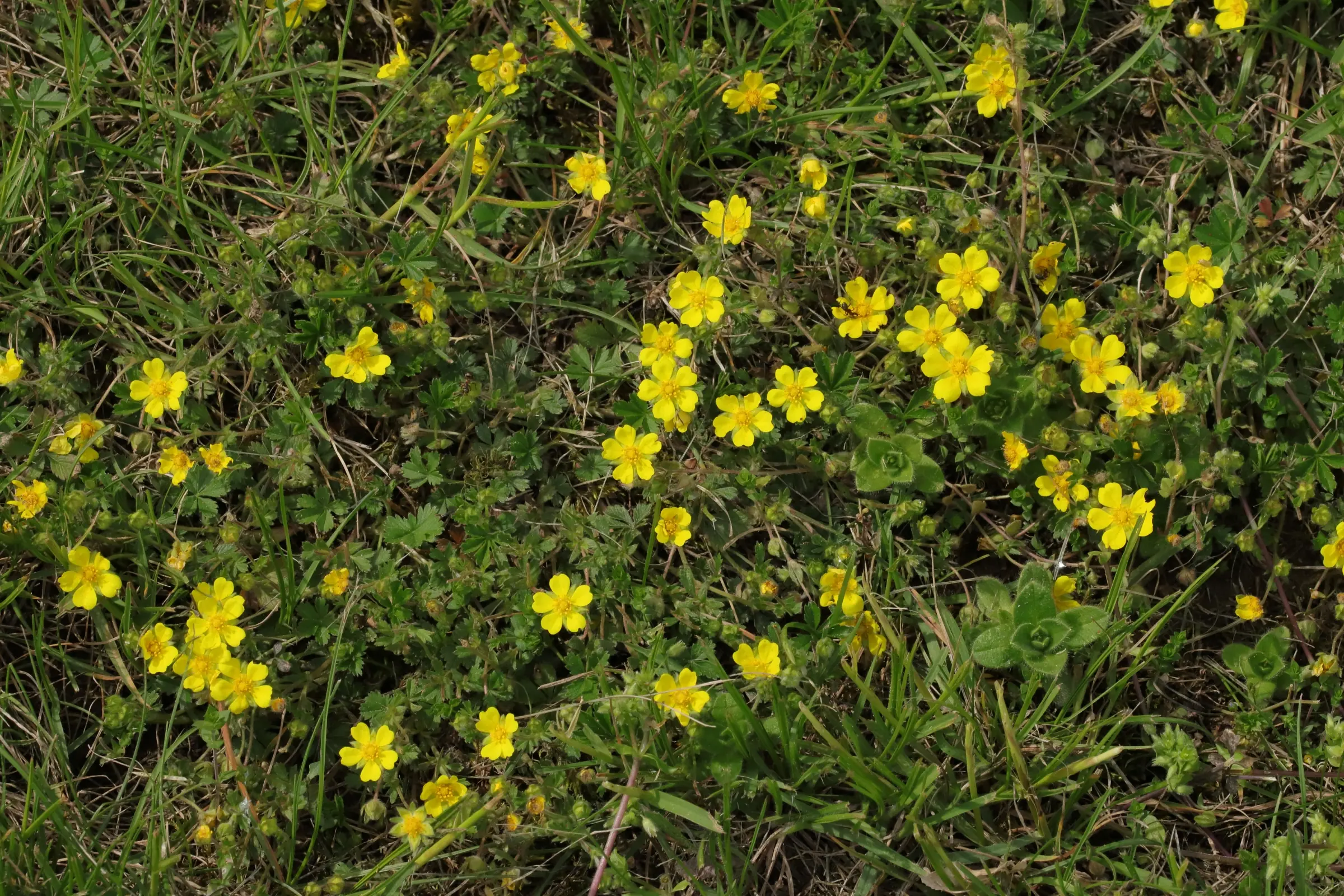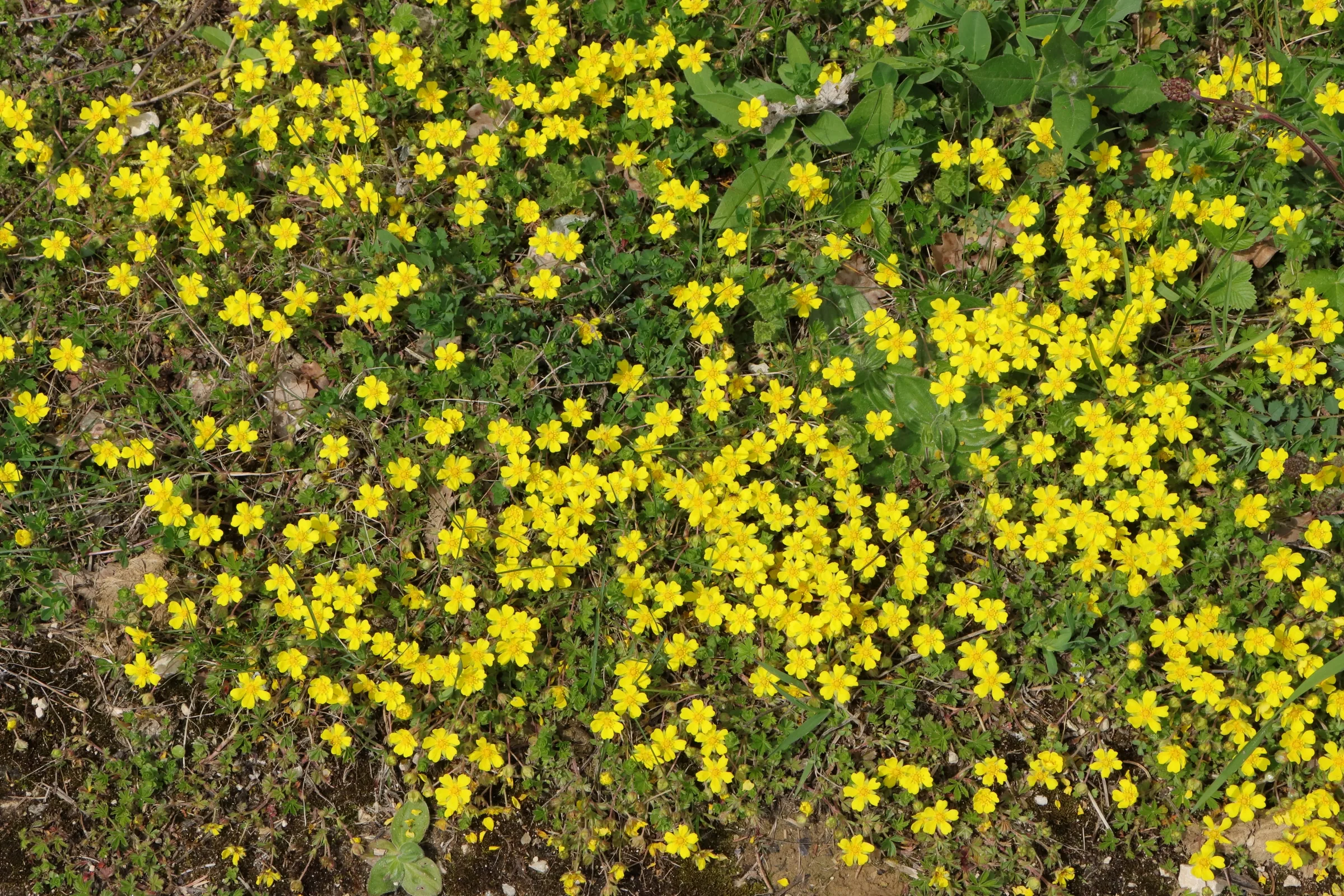Especially in spring, the inflorescences and leaves of spring cinquefoil cover large areas of gravelly and sandy soils.


Occurrence and distribution: The spring cinquefoil is a widespread and common plant in central Europe. It grows on arid places like rocks as well as open gravel and sandy soils. It can also be found in ruderal meadows, along roadsides and railroad embankments, as well as along waysides. In the Alps, the spring cinquefoil can be found at altitudes of up to 1,650 meters. The plant indicates nitrogen-poor sites!
Plant description
Growth habit: The plant is trailing and thus forms an evergreen ground cover. As a result, it reaches a height of between 5 to 10 cm. Large carpets of plants are often formed. Under the ground elongated, deep-reaching roots are formed. The shoots are low lying and some of them root at the thickened nodes.
Leaves: The leaves of the spring cinquefoil are divided finger-shaped, consisting of five to seven obovate leaflets. They have a length of up to four centimeters. The stipules are narrow-lanceolate in structure and sit at the base of the petioles. All edges of the leaves are serrated and have a dark green color. The upper side of the leaves is slightly hairy.
Flowers: The inflorescences consist of a flower group with up to 12 individual flowers. The individual flowers are cup-shaped and have a size of up to 2.5 cm. The petals are golden yellow in color and have clearly visible spaces between them. Towards the stigma, some of the flowers also have a light orange coloration. The stigma in the center of the flower is colored yellow. The anthers are located at the end of short stamens. Short hairs form on the green colored, pointedly converging, shorter bracts. The flowering period is from March to May. A second flowering may occur in late summer (September / October). Pollination of the plants is mainly by insects.
Fruits: The fruits consist of small nutlets. Individual seeds have a proteinaceous appendage and are spread by ants. The nutlets have a short spine at the upper end. The fruit ripens in June to July.
Name origin
Name origin: The genus name “Potentilla” is derived from the latin word “potens” – which means “powerful”. The part of the name “illa” is considered a diminutive. Since the plant moves mainly on the ground.
Endangerment of the plant
Endangerment of the plant: The spring cinquefoil is classified as non-endangered on the Red List of Germany. The plant is also considered to be non-threatened in the individual German states.
Distribution codes: A, AV, M1, M2, F, K